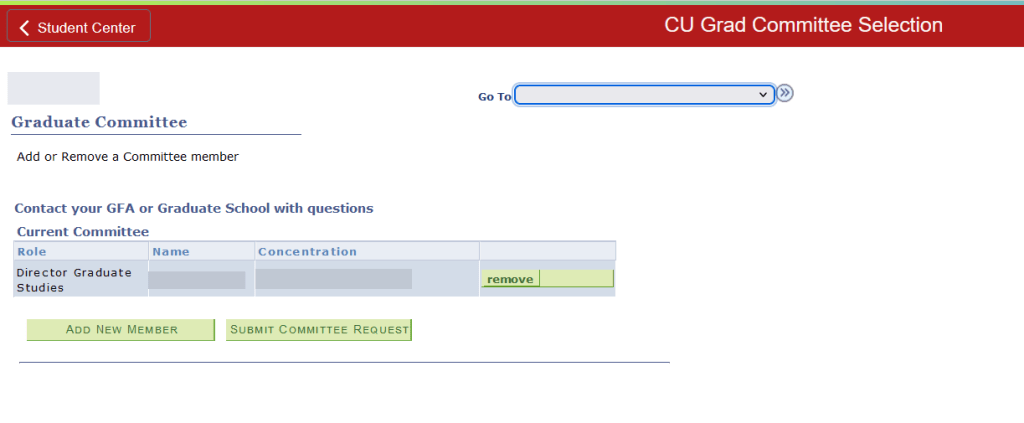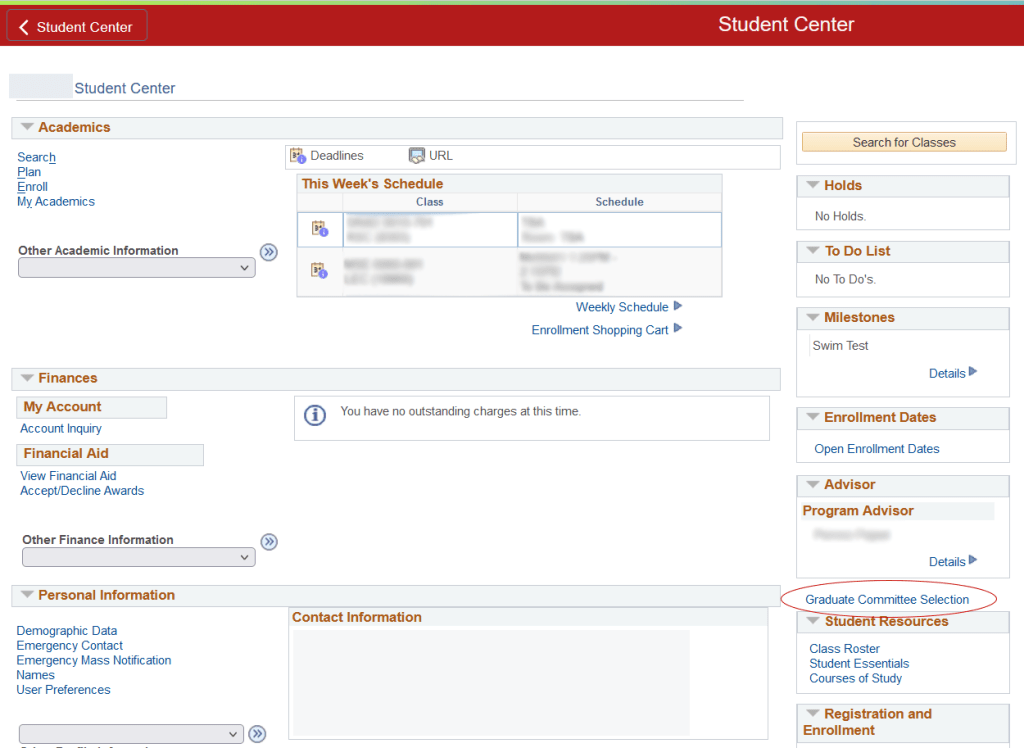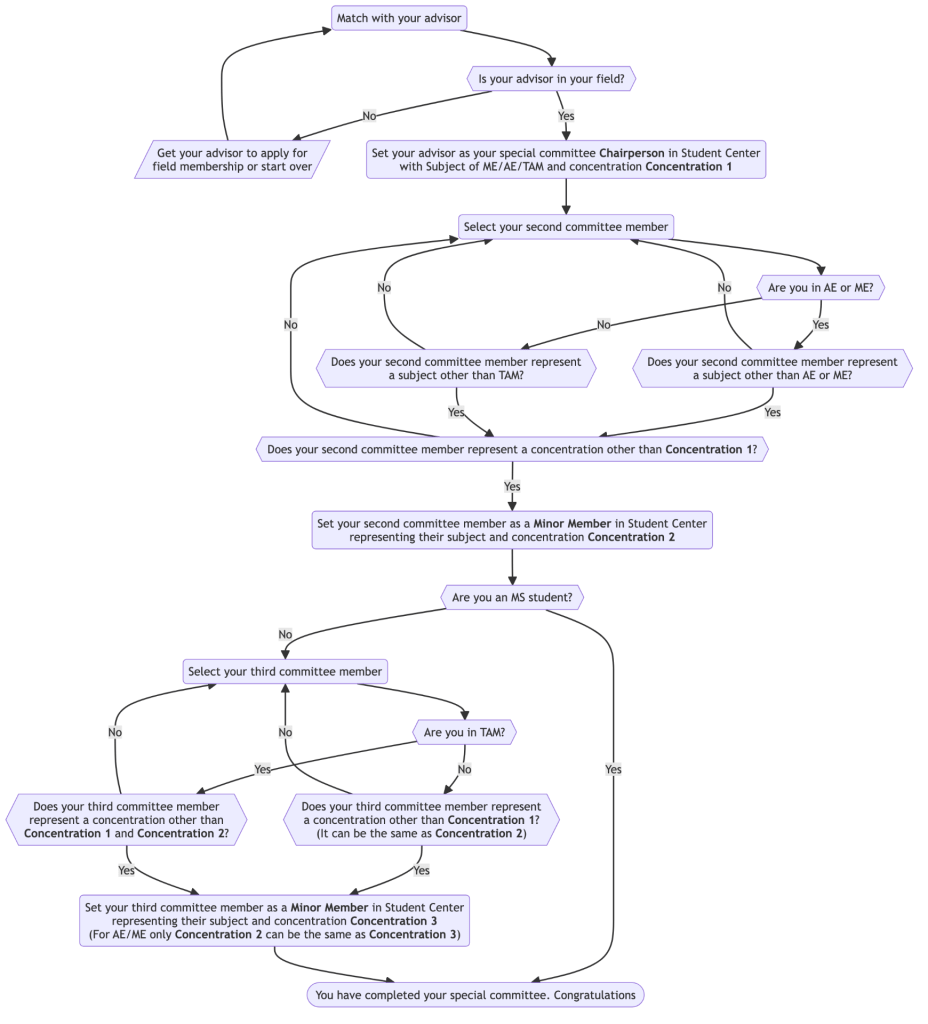Matching
If you enter your graduate field via pooled admissions on a first semester fellowship or assistantship (the most common situation for PhD students in MAE), then three weeks after the start of your first semester, the graduate school will automatically set your field’s current DGS as your primary advisor. In certain (typically rare) cases, you will begin your degree program with an advisor already identified. In this case, and only with prior approval from the Associate Director for Graduate Affairs (ADGA) you should set your advisor in student center within the first three weeks of your first term.
Everyone entering their field on a first semester fellowship has almost the entirety of their first semester (until December 1st) to match with their primary advisor. All matching is done through the ADGA. Even if you come in knowing that you want to work with a particular faculty member, and they also wish to work with you, you must still engage in the matching process, and the match must be confirmed by the ADGA. The current matching process requires you to have 3 ‘significant interactions’ with 3 different faculty members in your graduate field. Throughout the semester you will be polled as to your group preferences. Faculty recruiting students will similarly be polled on their needs and preferences. After the sixth week of the semester (typically in early- to mid-October), you will be allowed to request a match with a faculty member. If confirmed, the graduate field office will notify you that you have been successfully matched.
There is absolutely no need to rush to match with faculty. Take your time in getting to know multiple faculty members and their groups. Most importantly, speak with current graduate students to understand how various groups function – there is a very wide range of group dynamics and mentoring styles, and fit is very important.
Setting Your Primary Advisor in Student Center
Once you have matched with a faculty member, you are responsible for setting them as your special committee chair.
This is done via your Student Center: http://studentcenter.cornell.edu/. Upon logging in, you should see a link titled ‘Graduate committee Selection’:
Upon clicking the link, you will be shown your current committee, which should consist of only your DGS at this stage:
 Click ‘Add New Member’, and select ‘Chairperson’. A drop-down menu should appear allowing you to select your advisor (if they are not in the list, consult the GFA). Once selected, another drop-down menu should appear allowing you to select your primary concentration (you should discuss what this should be with your new advisor before proceeding). After making the selections, click ‘Save’:
Click ‘Add New Member’, and select ‘Chairperson’. A drop-down menu should appear allowing you to select your advisor (if they are not in the list, consult the GFA). Once selected, another drop-down menu should appear allowing you to select your primary concentration (you should discuss what this should be with your new advisor before proceeding). After making the selections, click ‘Save’:
 Once you have selected your new advisor, you will be returned to the main Graduate Committee Selection screen. Click the ‘remove’ button next to your DGS’s name (if you attempt to submit your new committee request with the DGS still listed, the system will throw an error). You should now see only your new advisor listed. Click ‘Submit Committee Request’. Your request will then be routed to your new advisor and the graduate field office for approval. Once all required approvals are registered, you will receive a confirmation from the graduate school, and your new advisor’s name will appear in the ‘Program Advisor’ box in Student Center.
Once you have selected your new advisor, you will be returned to the main Graduate Committee Selection screen. Click the ‘remove’ button next to your DGS’s name (if you attempt to submit your new committee request with the DGS still listed, the system will throw an error). You should now see only your new advisor listed. Click ‘Submit Committee Request’. Your request will then be routed to your new advisor and the graduate field office for approval. Once all required approvals are registered, you will receive a confirmation from the graduate school, and your new advisor’s name will appear in the ‘Program Advisor’ box in Student Center.
Selecting Your Special Committee
The graduate school requires that you select your full special committee by the end of your third semester for PhDs and by the end of the second semester for MSs. It is possible to petition to extend this deadline, but is generally discouraged, unless you have special circumstances (such as switching advisors in your first year). You should select your special committee in consultation with your advisor, and (if you desire) with input from your DGS. Once you select your full committee, you will follow the same student center procedure described above to add your minor committee members. Both of your minor committee members should be added with the role Minor Member and you should add both minor committee members (and any additional members you wish to have on your committee) in the same request.
Fields, Subjects, and Concentrations
In the Cornell Grad School, a major Field is a group of faculty that administer a graduate degree program (see this page). Fields can be partitioned into Subjects. Most fields have only one subject and the distinction between Field and Subject is uncommon for PhD students, so most people have never heard or thought about Subjects (see the complete list here–one example of a Field with multiple subjects is Evolutionary Biology and Ecology, which has an Ecology Subject and an Evolutionary Biology Subject). This handbook covers the fields of Mechanical Engineering (ME), Aerospace Engineering (AE) and Theoretical and Applied Mechanics (TAM). All three of these fields currently have one single subject, with the same name as the field.
Each Subject is partitioned into Concentrations. For example, Mechanical Engineering has 7 concentrations: biomedical mechanics, dynamics and control, energy and sustainability, fluid dynamics, micro- and nanoscale engineering, solid mechanics and materials, and thermal science. Aerospace Engineering also has 7 (partially overlapping) concentrations, while Theoretical and Applied Mechanics has four.
A minor Field is a Field that offers no admission and no degrees, it serves only to provide minor Subjects. Faculty can represent those field as minor subject members, but not as Special Committee Chairs. The only minor Field that is likely relevant to the MAE Fields is Computational Science and Engineering.
Subject Representation on Special Committees
The graduate school specifies the constituents of a committee in terms of major and minor Subjects. Because most Fields have only one Subject (including all three of the fields associated with MAE), most people describe committee requirements in terms of Fields as shorthand. More information on majors and minors is available from the graduate school here: https://gradschool.cornell.edu/policies/majors-and-minors/
A PhD committee must include a minimum of 3 members (chair plus two minor members). In all of the MAE fields, at least one Subject other than the major Subject must be represented on the committee, although both minor committee members can represent Subjects other than the major Subject. In addition, the ME and AE field rules state: “Students are required to take at least one minor subject outside of the fields of Mechanical Engineering and Aerospace Engineering.” (TAM field rules do not include this restriction). This means that for ME and AE students, their committee must include at least one member representing a field other than ME or AE. For TAM, the committee must include at least one member representing any subject other than TAM (which includes AE/ME).
In the case where one of the minor committee members represents the same Subject as the committee chair, the minor member must represent a different concentration from the chair within the major Subject. All three fields’ rules state: “The concentration studied for each minor subject must be distinct from that of the major subject.” TAM rules also state: “The student’s special committee must reflect three distinct concentrations.”
An MS committee must consist of a minimum of 2 members (chair plus one minor member). The same rules for minor Subjects apply as for the PhD.
These rules can be interpreted as follows:
- The chair of your special committee must be a member of the field that you matriculated in. Your chair must be selected as representing a concentration within that field on the special committee.
- Your second committee member must represent a subject (field) different from that of the committee chair. This committee member may be a member of the special committee chair’s field as well, but on the special committee, they must represent a different field. The second committee member must represent a concentration that is different from the concentration represented by the committee chair. For AE and ME students, the second committee member must represent a subject that is not AE or ME. For TAM students, the second committee member must represent a subject that is not TAM.
- For PhDs only: the third member of the special committee may represent the same subject (field) as either of the first two committee members, or a different, third subject. The third committee member must represent a concentration that is different from the concentration represented by the committee chair. The concentration represented by the third committee member may be the same as that represented by the second committee member for AE and ME students, but must be different for TAM students.
Here is a flowchart illustrating the committee selection process based on these rules:
Here’s a practical example. Let’s say that you are a PhD student in Mechanical Engineering. You match with your advisor and set them as your special committee chair, representing dynamics and controls. You are highly interested in robotics and AI, and after some discussion with several faculty, you choose your second committee member to represent the subject of Computer Science (in the field of Computer Science), representing the concentration of Artificial Intelligence. It turns out that this person is also a field member of Mechanical Engineering, but that’s ok – on the special committee form, they’ll be listed as representing Computer Science. For your third committee member, you’re trying to decide between two faculty: one who is only a member of Mechanical Engineering (ME), and another who is only a member of Electrical and Computer Engineering (ECE). You can pick either one! If you pick the person who is only a member of ME as your third committee member, you just have to make sure that they represent any of the ME concentrations that isn’t dynamics and controls. If you pick the ECE faculty, they can represent any of the ECE concentrations on your committee (since ECE has no dynamics and controls concentration). Or – you can actually pick both and have a committee of four members (or even more) – three members is just the minimum. The only thing you are not allowed to do is to pick a committee where you have three members all representing ME /AE, or a committee where you have the chair and another member both representing the same concentration.
The same goes for students in AE and TAM, and also for MS students in ME, except that MS students do not need to worry about a third committee member (unless they want one).
How can you tell which faculty are members of which field? Just check the field rosters. The one for the MAE-associated fields are linked in the navigation menus, above. For all other fields, go to: https://gradschool.cornell.edu/admissions/degrees-fields/cugradfos/
Additional information on special committees is available from the graduate school here: https://gradschool.cornell.edu/academic-progress/requirements/making-academic-progress/nominating-your-special-committee/
Changing Your Special Committee
You are allowed to change your special committee members throughout your degree program. Details on committee change rules are given by the graduate school here: https://gradschool.cornell.edu/academic-progress/requirements/changing-your-committee/


